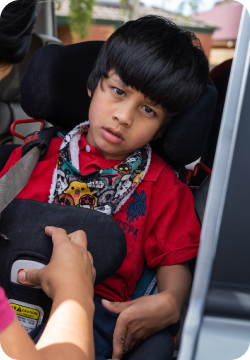MACA's national survey results
MACA's national survey reveals stark challenges relating to the transport of children with disabilities and medical conditions in motor vehicles.

First and largest survey of its kind in Australia
MACA recently closed its national survey, funded by the Australian Government Department of Social Services, and undertaken in partnership with Curtin University.
This survey captured the experiences and perspectives from parents, health professionals and organisations on the safe transport of children with disabilities and medical conditions in motor vehicles.
Around 500 responses were received.

Key insights
- Nearly half of caregivers believed that their child was missing out on participating in everyday life due to their transport arrangements.
- Parents reported that children frequently get out of their child restraint or seatbelt.
- For health professionals who had prescribed a special purpose child restraint funded by the NDIS, the wait time from the point of identification to receipt of the restraint varied between 1-2 weeks to 2-3 years. The most frequently reported wait time was 5-6 months.
- Health professionals reported low self-perceived confidence and knowledge in addressing the transport needs of children with disabilities and medical conditions.

Next steps
MACA is acting on the research findings by:
- Providing evidence informed information and tools for Australian health professionals such as the MACA Guide and a range of templates, policies and FAQs developed in line with the different laws in each state and territory for the most common prescribing scenarios.
- Working closely with leading universities and researchers to fill the global gap in research relating to policies, products, and practices. This includes working closely with product suppliers which will see much needed new special purpose child restraints becoming available over the coming months.
- Establishing a world leading Australian Safety Assessment Program (AuSAP) to independently assess and review the safety of restraint systems used by children with disabilities and medical conditions.
This website is the first step in responding to the national survey findings. The information will support allied health professionals in their important prescribing role.

